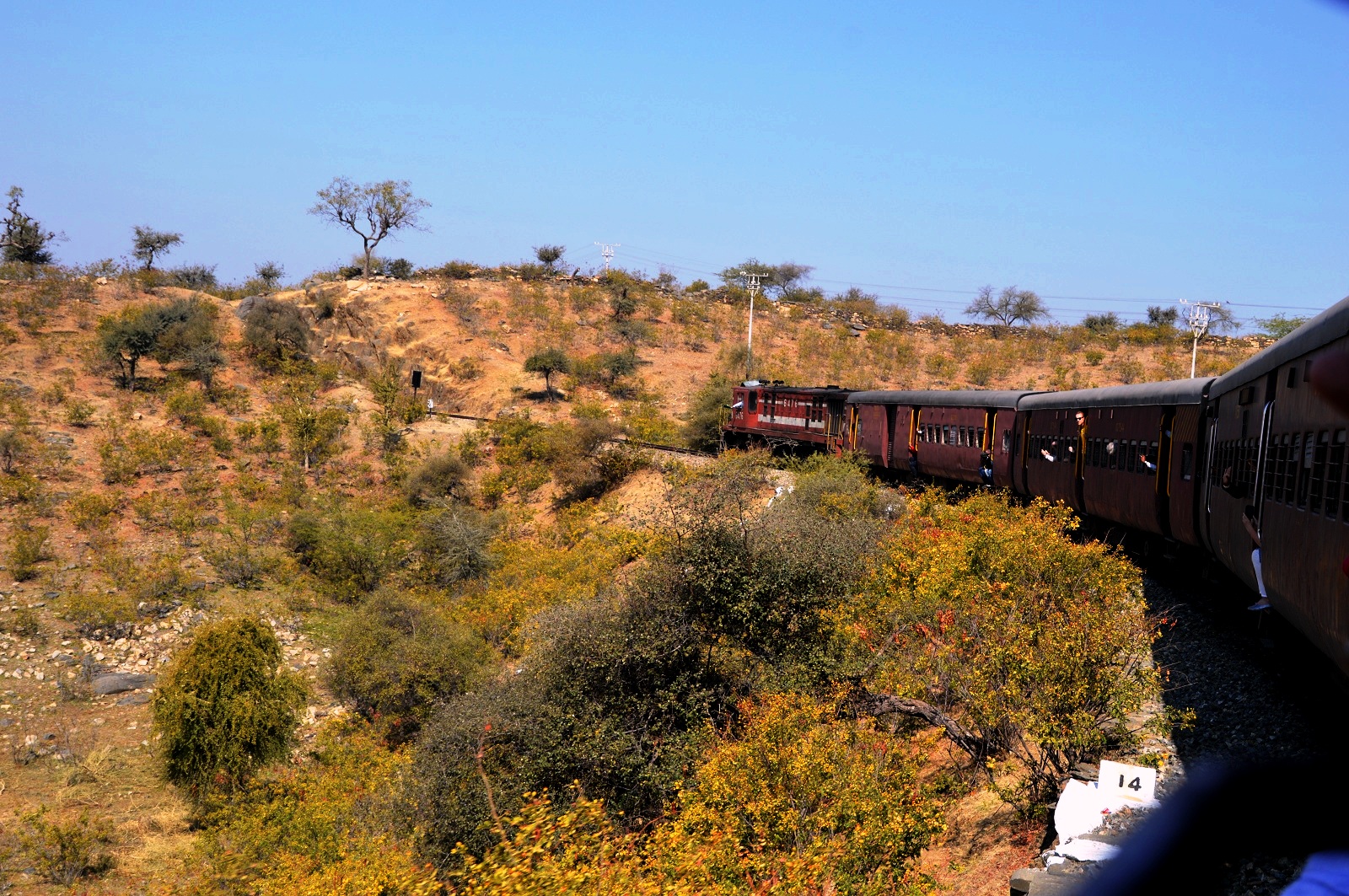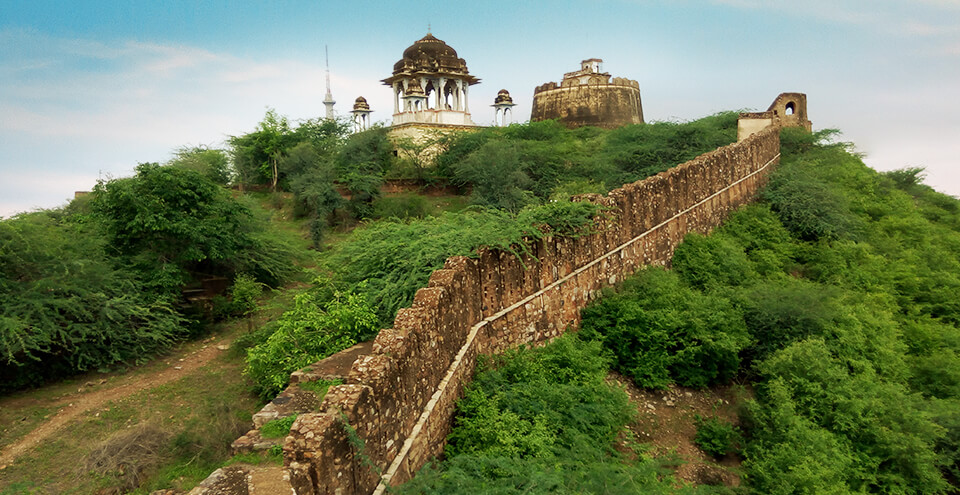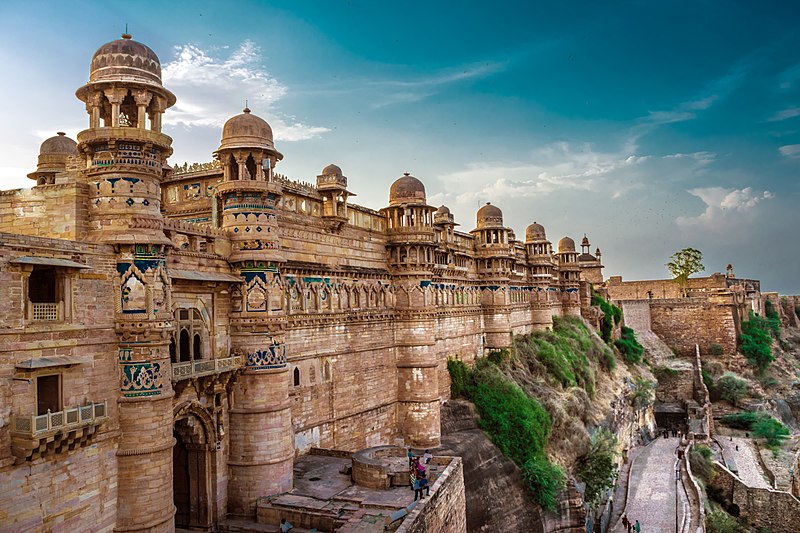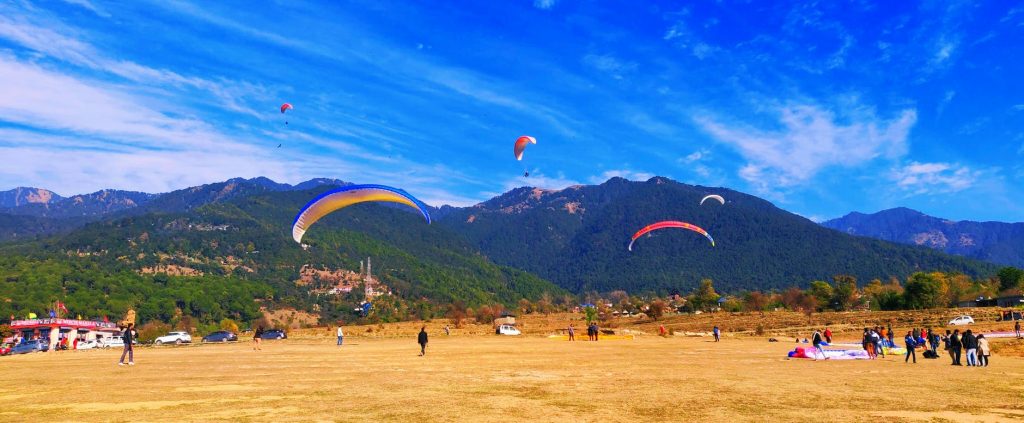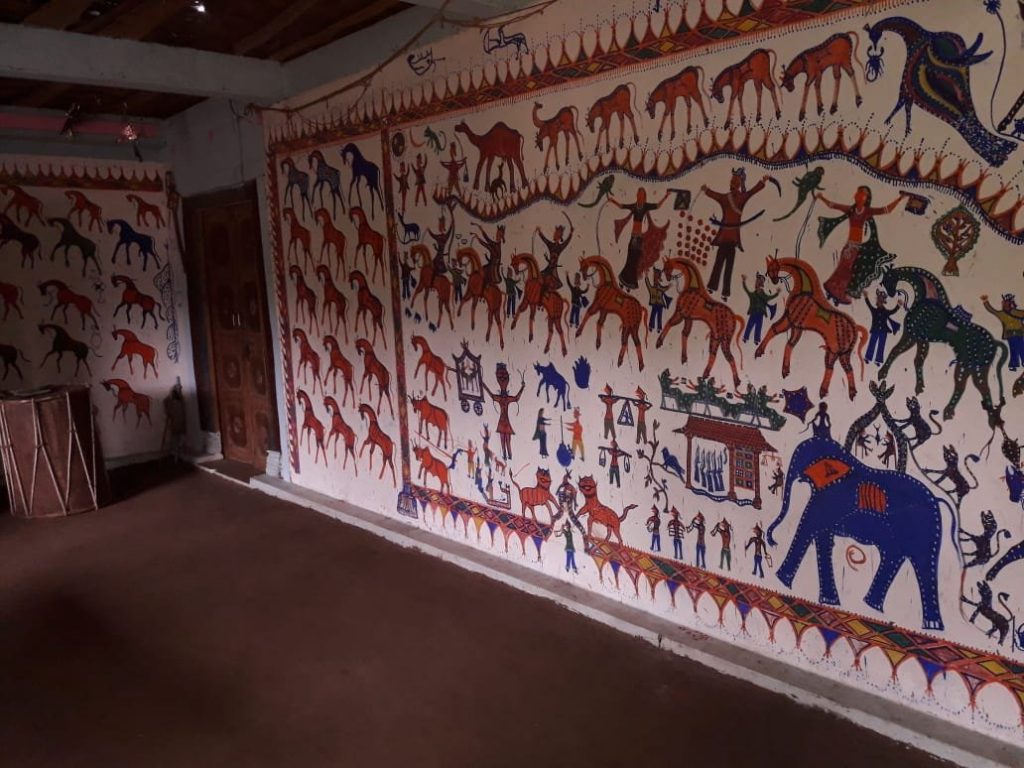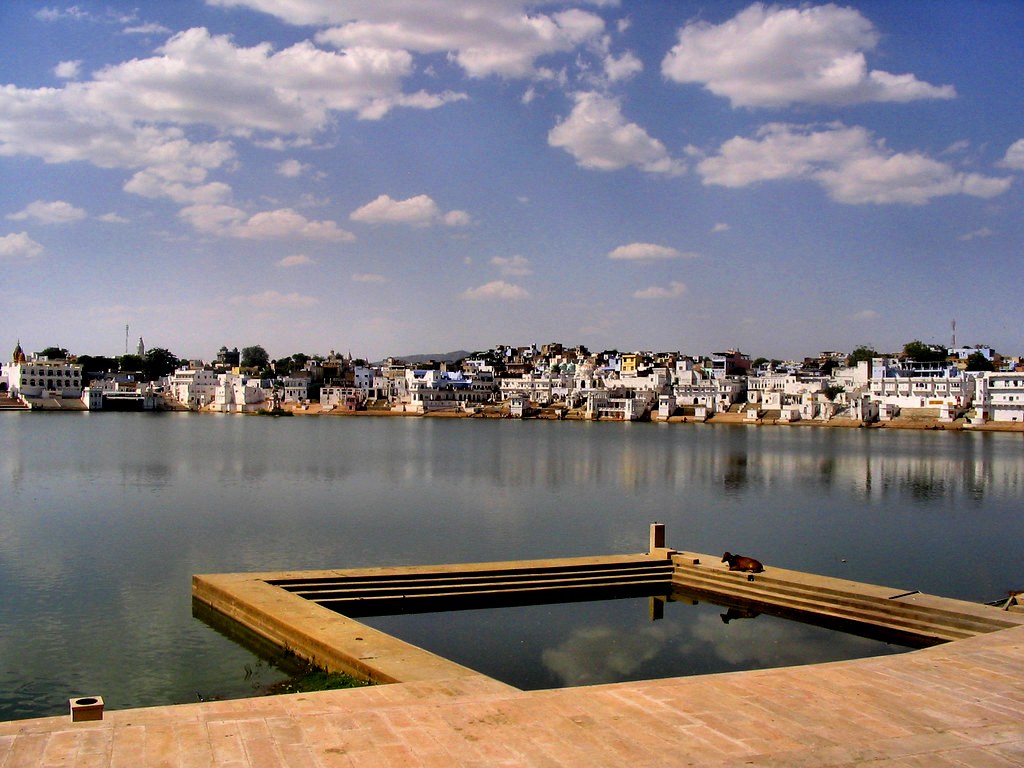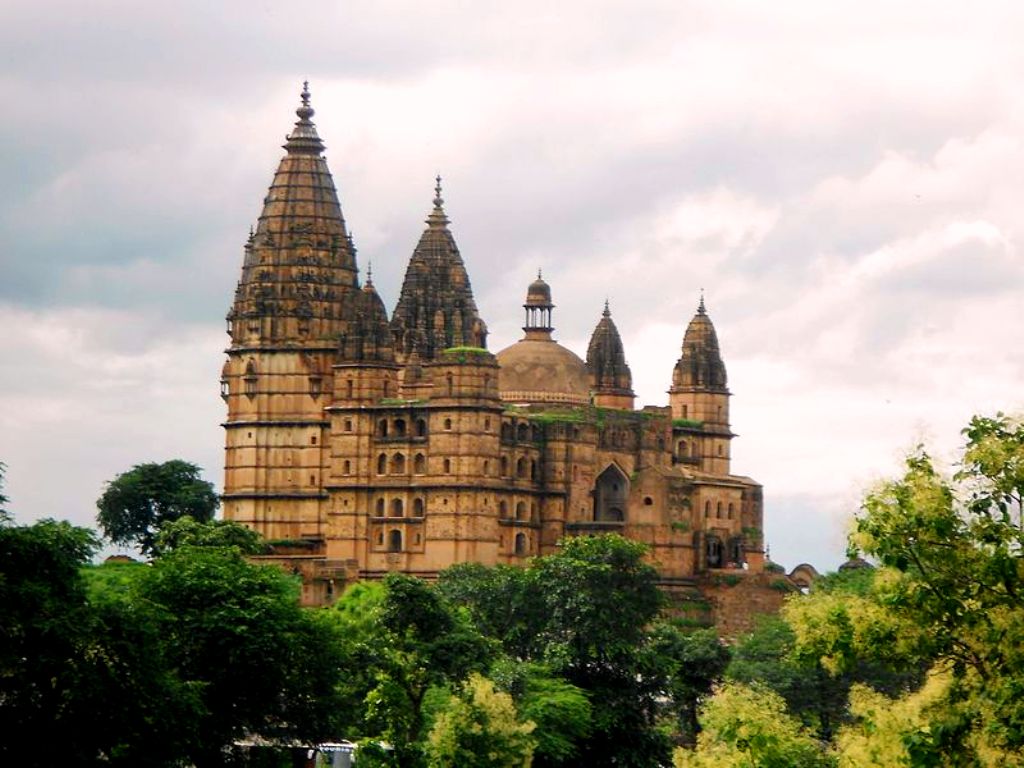Aurangabad an excursions to the world-famous UNESCO World Heritage Sites of Ajanta and Ellora.
From here that one usually sets off to explore the one-of-its-kind Lonar Crater Lake, a National Geo-
Heritage Monument. Within the city itself are numerous edifices which bookmark key characters
and events in India’s colourful history.
Yet, the sleepy town in the heart of the Indian state of Maharashtra seems unmoved by its role in
the global tourism arena. Its traffic-free streets breathe at a leisurely pace. Its quiet neighbourhoods
hum to a small-town rhythm reminiscent of the time when it was a village that went by the name
Khadki. With 52 gates built during the Mughal era scattered over its expanse, Aurangabad is often
referred to by its moniker “City of Gates.” Its official name was coined by the 6th Mughal Emperor
Aurangzeb in 1653. He was the Viceroy of the Deccan back then and Aurangabad was his capital.
One of the major attractions Aurangabad offers is rock-cut architecture, also known as excavated
caves. There are over 1,500 such caves in India, of which the largest number are in Maharashtra;
most are Buddhist. The finest of the entire lot, the creme de la creme, are around Aurangabad.
The top sightseeing places in Aurangabad are Grishneshwar Temple, Bibi ka Maqbara, The Ajanta
caves, Ellora caves, Daulatabad Fort, Aurangabad Caves.
Bundi a town in the Hadoti region of state Rajasthan in northwest India
Bundi famous for its monuments and especially its fort, which preserves the glorious legacy of its erstwhile Rajput rulers The Taragarh fort, built in 1354, with its imposing structure of stone, is situated on a steep hill and has massive battlements and ramparts, the picturesque Sukh Mahal (summer palace), located on the banks of Jait Sagar, has fallen into disrepair, but it’s still worth a visit if you’re a remember Rudyard Kipling.
The fort is well worth a visit and a guided walk with Jay Singh is worth the spending for story value alone. He is quite a character and will put a smile on your face, visit to the market, silver bangles shops and scarves shops of region print but that in itself was an experience, the dinner at Elephant Stables,
home style Thali is one of the most interesting dinner to experience.
Gwalior city in the central Indian state of Madhya Pradesh. It’s known for its palaces and temples, intricately carved Hindu temple. Ancient Gwalior Fort occupies a sandstone plateau overlooking the city and is accessed via a winding road lined with sacred Jain statues. Within the fort’s high walls is the 15th-century Gujari Mahal Palace, now an archaeological museum.
Gwalior is famous for historical Places like Gwalior Fort, Sun temple, Tombs and Scindia palace, Mahrajbada and few more. it is small and well managed city. In the ancient text of Mahabharata a reference has been made about a place called Gopalkaksh. It has been described as the victory place of Bhima. According to some historians Gopalkaksh is Gopadri or Gopagiri, the old name of Gwalior.
Well the charm of this city is of mix of heritage and old way of lifestyle, Gwalior is not a very big city but yes you may find very interesting places to explore. Jaivilas Palace: This is basically the Scindhia palace which is turned to a Museum. Fort: Gwalior fort is one of the best places to visit.
Dharamshala is a city in the Indian state of Himachal Pradesh. Surrounded by cedar forests on the edge of the Himalayas, this hillside city is home to the Dalai Lama and the Tibetan government-in-exile. The ThekchenChöling Temple Complex is a spiritual center for Tibetan Buddhism, while the Library of Tibetan Works and Archives houses thousands of precious manuscripts.
The place is known for its various attractions including the residence of the 14th Dalai Lama. The place is one of the most frequented spots in Dharamshala and is famous for its Tibetan culture, handicrafts and temples.
Dharamshala is known for the mesmerizing backdrop, stunning lake, vibrant monasteries, colorful temples, sparkling waterfalls, and vintage forts & museums and is one of the most popular tourist destinations in north hills of India.
Dharamsala is more of a residential area. The main tourist spots can be covered in a day. I would suggest you to stay at Macleodganj and cover-up Dharamsala by taxi or if you have your own conveyance, then nothing like it. There are several places like Naddi, Dharamkot, Triund where you can trek from Maclo.
a unique opportunity to stay in a monastery, attend pujas (ceremony), speak to the monks and become a part of the Tibetan spiritual world for a while. Guyto monastery has got rooms for rent for their visitors.
Kota is a city along Chambal River in Rajasthan.
The city of Kota was once the part of the erstwhile Rajput kingdom of Bundi. It became a separate princely state in the 17th century. Apart from the several monuments that reflect the glory of the town, Kota is also known for its palaces and gardens
Inside the Kota Garh, or City Palace, the MaharaoMadho Singh Museum exhibits miniature paintings and antique weapons. South, along the river, tranquil Chambal Garden has a pond with crocodiles. Northeast, 18th-century Jagmandir Palace sits in the middle of Kishore Sagar Lake.
Kota saris like most traditional piece of work had been revived which was lost before, now workers to revive its market. Many textile shops in the city sell different varieties of Kota doria. These saris have become one of the trademarks of the city. Market lanes are most interesting to walk downtown.
My visit to Mandu is a small town in Madhya Pradesh central India first time was so stunning that, I will surely like to suggest any of the holiday consultant to use this unknown place to give the real feel of great architecture and ambience of real bygone era.. Mandu was founded as a fortress retreat in the 10th century by Raja Bhoj and conquered by the Muslim rulers of Delhi in 1304. When the Mughals captured Delhi in 1401, the Afghan Dilawar Khan, governor of Malwa, set up his own little kingdom and Mandu’s golden age began. It is now best known for a fort built by Baaz Bahadur in memory of his queen Rani Roopmati. Between 1401 and 1561 it was the capital of a Muslim state in the north of India. Mandu festival starts in Mandu. … The Mandu festival, which goes on till January 1, the amalgamation of cultural activities as well as adventure sports. The rich classical and traditional folk arts of dance, singing and playing will once again come alive through the Mandu festivals.
Mandu is one of the top tourist places in Madhya Pradesh, yet is still delightfully off the beaten path.
Mathura is a sacred city in Uttar Pradesh, northern India, Situated along the banks of the river Yamuna is in north-central India. The historic town of Mathura. is famous for the town of Vrindavan, one of the most sacred places in Vaishnavism.. an important pilgrimage centre of Hindus after Varanasi. Dotting the Yamuna River are 25 ghats (steps downto the water), of which VishramGhat is considered the holiest. Sati Burj is a 16th-century memorial tower. Dwarkadhish Temple has a carved entrance and a black-marble idol of Lord Krishna, the fascinating prayers and the surrounding atmosphere are most heart touching..
A jumble of never-ending lanes teeming with folks, rickshaws and glittering shops. The city is dotted with magnificent temples, most of them dedicated to Lord Krishna, the city’s presiding deity and its first citizen. These temples depict various phases of Lord Krishna’s life, taking the devotees back to the divine era. Mathura is an important pilgrimage destination of the Hindus and is one of the seven sacred cities of India.
Mathura is well-known for its signature sweet, the Peda. It is a sweet, which is as delicious as it is simple. Made from Milk, sugar powder, condensed milk and ghee, it is available throughout the year. It is highly popular among the locals and visitors. To watch the making of the local sweets are one of the highlights of visiting, Mathura.
Mathura a city of devotion..
Rishikesh an interactive insight, it seems only fitting that the a stopover of Indian journey
To realise that part of what appeals a traveller to known the Indian way of mapping Body, soul and mind. Rishikesh is the beating heart and soul of India. Rishikesh is also the Yoga capital of the world.
Even there is a train running between Haridwar (gateway to Rishikesh) and Delhi called the Yoga Express. We don’t recommend you take it though: it takes 4 hours longer than the Shatabdi express trains to plough the same route.
Given the status that Rishikesh holds, looking for the best ashram in Rishikesh, searching for yoga hideaways, yoga teacher training courses, ashrams, meditation retreats in Rishikesh, ayurvedic healing, reiki and energetic healing (the list goes on) can be a daunting task. To start with the term “Rishikesh” is usually applied somewhat loosely.
For just a Rishikesh visitor “Rishikesh” is the area of Laxman Jhula and Tapovan, a place of holy river ganges is worshiped. Two bridges span the vibrantly emerald Ganges that runs between the cliffs here: the Laxman Jhula Bridge and the Ram Jhula Bridge and we effort for the insight of Rishikesh which will to know the Yoga, Meditation and a peace in life..
Spend 10 days in Rishikesh towards the end of India travel, staying in ashrams and yoga retreats, inevitably lead you into conversations with strangers, music on ghats by the river and more. For the action driven – Rishikesh offers white water rafting and hiking opportunities a-plenty. We have good places of choice to stay on the side of the other side of bridge, about 15 minutes walk from Laxman Jhula and the main market street, staying at Tapovan in quite, relaxed, but still with plenty of places to enjoy a chai or join a yoga class, happily wanderlust in the town, relaxed in cafes with with river views.
Attended the Ganga Aarti (evening Hindu prayer ceremonies) at Parmarth Niketan Ashram in Rishikesh. This is the largest and best known Ashram in the area – set on the banks of the holy river. The Ganga Aarti are beautiful in evening.
Ashrams also have wildly differing styles and schedules. Some are focused on yoga and include several hours a day of asana yoga classes; others more on meditation; others have a more relaxed schedule. Across the river is the Rajaji National park: home to tigers, elephant and – leopard
An alcohol-free and vegetarian reserve upstream is Rishikesh town.
Osian (Osiyan), also known as the ‘Khajuraho of Rajasthan’, has earned this name due to its many temples, some of which are very erotic. It is an ancient temple city located 65 kms north of Jodhpur in the state of Rajasthan in western India.
This place is of utmost significance to the Jains and the Hindus as some of their most important shrines lie in this beautiful city. Amongst the many temples that this town is host to, the ones that stand out in their beauty and grandeur are the Surya or Sun Temple, the Sachiya Mata Temple and the main Jain temple dedicated to Lord Mahavira. Endowed with golden sand dunes all around, one can get a majestic aerial view of this place from the Sachiya Mata Temple.
Osian is an ancient town located in the Jodhpur District of Rajasthan state in western India. It is an oasis in the Thar Desert. The town is a panchayat village and the headquarters for Osian tehsil.
This desert town located in the district of Jodhpur in Rajasthan is sure to give you a sizzling experience. It is a 65 km drive from the city of Jodhpur and is accessible only by road. The nearest cities to get to Osian from are Bikaner, Jodhpur or Jaipur. Offering the best tourist places in Osian, this oasis boasts of Hindu and Jain temples, close to 16, and thus is also known as the “Khajuraho of Rajasthan” given the erotic sculptures at the temples and thus is of utmost significance to them. The specialty of these temples is that they stand out for their architecture and history behind each of them. Back in ancient times, it was also a prominent trading site for silk in the region. With extreme climates at the desert, the time of visit is extremely important when visiting Osian. It is also commonly known as the “Oasis of the Thar Desert”.
A maximum of one or two days of trip to Osian is sufficient to cover the entire temple town. The town has many hotels, camps and resorts to stay at during your trip there catering to all kind of budgets. However, most travellers stay at Jodhpur and complete exploring Osian in a day if it is well planned. There are some heritage hotels available in the region for those looking for a comfortable stay. Apart from temples visits and pilgrims, the most common and popular activity here would be the camel safari. Most hotels would facilitate your bookings for the safari, if not it is recommended to pre-book it with a tour agency to avoid paying huge amounts at the last minute. A trip to Osian will give you a complete desert experience. Here are a few frequently asked questions and answers to help you plan your trip to this desert town:
The present district headquarter Karauli was one of the prominent earldoms of the ancient Rajputana. The rulers of Karauli Earldom have a glorious history from the year 1100 till 1947. Yadhuwanshi rulers of the earldom constructed many Forts, Fortresses, and small settlements to protect their dignity, security of their subject and maintenance of natural disasters. In these settlements and forts rare samples of architectural specialties, embedded art and paintings can be experienced. Karauli is an ancient state, due to which it has a multiplicity of tourist, historic and religious places, where glory is spread all over.
Fort of Timangarh:
This fort is situated in Masalpur village 42 KM away from district headquarter Karauli. There are incomparable archaeological sculptures. According to prevailing beliefs, in Samvat (Hindu calendar) 1244 Yadhuvanshi ruler Timanpal constructed this Fort. Some historians have described this ancient fort more than 1000 years old. Stone scriptures and ancient creations inside this fort narrate that it was established by a craftsperson and art lover, which later gone into possession of ruler. Around of this fort, there exists unique example of 5 feet wide and 30 feet high rampart bulwark architecture. Market inside fort, flooring, garden, temples, and remains of well are still available. It seems as a whole city is enclosed within the entire fort. The entry gate has a statue of Lord Bharama and Ganesha, but portraits of Ghost and Demon can also be seen. The broken idols in the fort seem that a huge market of sculptures existed here. There are also small rooms in the fort, which were probably used as a bathroom.
Mandrayal Fort:
In the south of Karauli 40 KM away from the bank of Chambal River and between the mountain ranges, this fort is made up red stone and situated on a small hill. Due to its location near to Gwalior. From the point of a monument, it is considered important. in the Surja Pol of Fort, there are direct sunlight from sunrise to sunset. In the year 1327 AD, Maharaja Arjun Dev had acquired this fort, which remained under the custodianship of Karauli dynasty.
Karauli is a city located in the Indian state of Rajasthan. The city is the administrative center of Karauli District, and was formerly the capital of the erstwhile princely state of Karauli. Karauli District comes under Bharatpur Divisional Commissionerate.
Pushkar is one of the oldest cities in India. Located to the northwest of Ajmer, the tranquil city of Pushkar is a favoured destination for thousands of tourists and devotees flocking to Rajasthan. Situated at a height of 510 metres, Pushkar is surrounded by hillocks on three sides. The ‘Nag Pahar’, literally meaning Snake Mountain forms a natural border between Ajmer and Pushkar. Known as ‘the rose garden of Rajasthan’, the essence of the famous Pushkar rose is exported all over the world. Along with an interesting mythological history, a legacy of timeless architectural heritage makes Pushkar a fascinating city.
According to legends, Lord Brahma, believed to be the creator of the Universe dropped a lotus to the ground leading to the immediate creation of a lake. He then decided to name the place after the flower, and thus the name, Pushkar. The city of Pushkar is home to the only temple dedicated to Lord Brahma in the whole world. Hindus consider a journey to Pushkar to be the ultimate pilgrimage that must be undertaken to attain salvation.
Pushkar is a town bordering the Thar Desert, in the northeastern Indian state of Rajasthan. It’s set on Pushkar Lake, a sacred Hindu site with 52 ghats (stone staircases) where pilgrims bathe. The town has hundreds of temples, including 14th-century Jagatpita Brahma Mandir, dedicated to the god of creation, which has a distinctive red spire and walls inlaid with pilgrims’ silver coins.
The historic town of Orchha, nestled on the banks of river Betwa, was founded in the 16th century by the Bundela Rajput Chief, Rudra Pratap. Here, the river Betwa splits into seven channels, also called the Satdhara. Legend goes that this is in honour of the seven erstwhile Chiefs of Orchha.
The ancient town seems frozen in time, with its many monuments continuing to retain their original grandeur even to this day. Here you will find some of the most fascinating temples and palaces that will help you realise a childhood fantasy – travelling back in time!
Orchha is located around 80 km away from Tikamgarh district in Madhya Pradesh and 15 km from Jhansi of Uttar Pradesh
The architectural heritage of Orchha town in Madhya Pradesh which depict peculiar style of the Bundela dynasty have been included in the tentative list of the UNESCO’s world heritage sites following a proposal sent by the Archaeological Survey of India (ASI) to the United Nations (UN) body.
The ASI had sent a proposal to the UNESCO on April 15, 2019 to include the sites in its list, an ASI official said.
According to the rules, to be a part of UNESCO’s World Heritage sites, the heritage or any historical site first has to be on the tentative list. After it makes to the tentative list, another proposal is sent to the UNESCO, the official said.
The ASI in its earlier proposal had requested to include Orchha in the list of cultural heritage.
Quick facts about Orchcha
Orchha is situated on the banks of the Betwa river. It is located around 80 km away from Tikamgarh district in Madhya Pradesh and 15 km from Jhansi of Uttar Pradesh. Orchha was built by king Rudra Pratap Singh of Bundela dynasty in the 16th century. The ancient town is famous for its Chaturbhuj Temple, Orchha fort complex, Raja Mahal among others.
The Bundela architecture has Mughal influence since the two dynasties were very close. The famous King of Bundela dynasty Veer Singh Dev was a close friend of Mughal emperor Jahangir and fought wars as Akbar’said.
Orchha is also famous for its two elevated minaret called Saavan and Bhadon and its four palaces — Jahangir Palace, Raj Mahal, Sheesh Mahal and Rai Praveen Mahal — and for its concept of open bungalows, stone work windows, animal statues depicting the culture of Bundelkhand.

